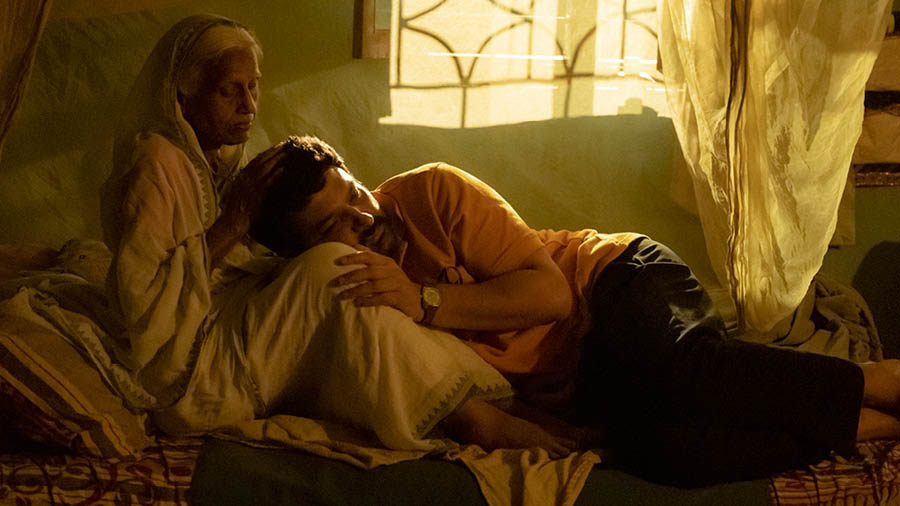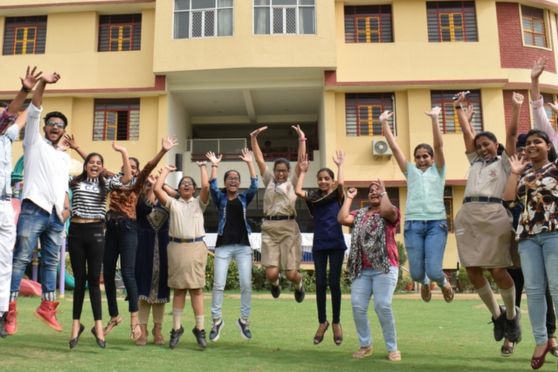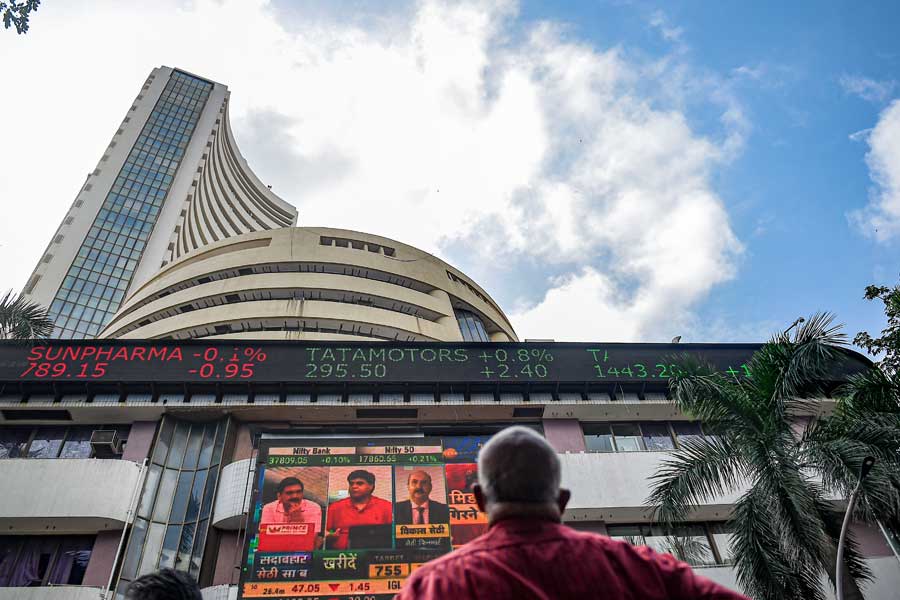Nandita Das’s Zwigato holds up a mirror to the hard-knock life that is always unfolding around us but mostly remains invisible, placing the spotlight on India’s gig economy workers. The film starring Kapil Sharma and Shahana Goswami had its world premiere at Toronto International Film Festival, Asian premiere at Busan International Film Festival and Indian premiere at the International Film Festival of Kerala. Nandita tells us why she chose to make Zwigato, the diverse responses she’s getting from audiences, and why she set the film in Bhubaneswar where it has been made tax-free.
What kind of response are you getting to Zwigato? Is it more or less around what you had expected?
Nandita Das: I am overwhelmed by the audience’s response — from those I know and those I don’t. And also the great reviews we have got from many film critics. Social media has made it possible to know genuine feedback, and it’s not just been about ‘liking’ the film. People are sharing their reflective responses and it is triggering empathy. Many have said that they have begun to notice those who ‘serve’ them much more. Many others also said that they had begun tipping and rating far more generously. I couldn't have asked for more. Audiences have picked up little nuances in the film and that has been very heartening, and this is across age, class and region. This is not to say that some people haven’t found it ‘too real’, ‘too heavy’ or ‘not enough dramatic’. The biggest challenge has been that in the last few years, people have been going to cinemas only to see ‘big-budget spectacles’. Films such as Zwigato that are more rooted in reality are only being watched on OTT and I know that is where it will be watched more. This is unfortunate as people are missing out on the collective and immersive experience of watching films in a dark hall, and slowly producers will be investing less and less in such films. We are denying ourselves diversity and true representation of the world we live in.
Zwigato is a political and social commentary that is specially relevant in the wake of the pandemic. Can you share some of your real-life experiences and observations that influenced your choice of the subject and what it conveys?
Nandita Das: Globally, there is a growing anxiety and despair around jobs. During the pandemic, we consumers, for our own convenience, became more and more dependent on gig workers and less and less aware of their struggle. All of us have ordered food during Covid and seldom thanked them or rated them or even acknowledged their existence.
While this was the trigger point, Zwigato is also about our normalised biases of class, caste and gender. They have all subtly found their way into the film, making the invisible, visible. The recent pandemic made us realise all this more — that the relentlessness of life is more acute for those who are more vulnerable than us. More so after Covid, where people have lost their jobs and are doing more menial work than they were meant to. I met many riders both in Mumbai and in Bhubaneswar where I set the film. Their stories were of struggle, resilience and hope. We live in an age of paradoxes – unemployment rates are so high, yet everyone talks about high economic growth. As I began to delve deeper into it, I was drawn to the human aspects of this collision of new technology and the life of the workers, who are just a cog in the wheel. With the rise of the gig economy, the struggle between man and machine that (Charlie) Chaplin depicted in Modern Times has shifted to one between man and algorithms.
What kind of research did the film entail?
Nandita Das: The research process for this film took about two years. Before starting the film, I understood the world of incentives and algorithms as little as my protagonist did! As I delved deeper, I became more and more fascinated and disturbed by what I got to know about the gig economy. We gathered facts as well as personal stories by interviewing many riders. Their struggles, dilemmas, fears and aspirations helped me understand their world closely. We also spoke to ex-employees of food delivery companies and, in confidence, to senior managers in analytics departments of food delivery apps.
I was surprised by the fact that a small change in the size of the ‘zone’ from where the orders can come from — the invisible button that all of us click on — makes a huge difference to them. The further away the deliveries are, the more the riders have to spend on fuel. They get a petrol fee for going out of their zone but not for returning. While all of the research could not be there in the film, it was important to understand how things work in the gig economy.

Kapil Sharma as Manas in Zwigato.
What made you zero in on Kapil Sharma? What was your brief to him about his character?
Nandita Das: The biggest advantage I had in taking that leap of faith was that I hadn’t watched The Kapil Sharma Show at all. Perhaps that’s why I didn’t have preconceived notions. In the clip I saw of him, hosting an awards function, he appeared very natural and candid and that is what made me think of him as Manas. And when I first met him, it was clear to me that he would be perfect for the role.
Kapil fully committed himself to the process, and together we were able to create Manas, a character who takes life in his stride and does the best he can to make ends meet. It requires sincerity and authenticity that can only come when you have it. I think that’s what Kapil brought to the table. So, I’m very happy. This character and the world he inhabits was not at all alien to Kapil as he comes from a humble background and has seen much struggle himself. He got into the character quite effortlessly.
I was just worried about Punjabi coming out of him! But he was up for the challenge. I gave him all his dialogues recorded by a person in Ranchi, who said them in the correct dialect. In any case, I didn’t want the accent to be too pronounced. Kapil not only did that, he also spoke much slower like easterners do, as opposed to his racing Punjabi!
It must have been fun to have Kapil Sharma on the sets…
Nandita Das: It was indeed fun to have Kapil on the set. But people think a comedian makes one laugh at all times. Just as many perceive me to always be serious! But we both laugh and have deep discussions about things that we care about. I don’t think it was more ‘comic’ than any other experience I have had on set. Every person adds their own flavour to the energy on set.
The character of Pratima stands out in the film and Shahana Goswami plays her so well…
Nandita Das: Having worked with Shahana in Firaaq and knowing her through the years, I was sure she was the perfect choice for Pratima. Shahana is very Pratima-like. We have a great working chemistry and I am very fond of her both as a person and as an actor. Sometimes I can just look at her and she will know what’s not working or why that moment was so special. I was really happy working with her again.
Zwigato has an abrupt ending. This is of course a conscious decision and we are curious to know your thoughts behind it...
Nandita Das: I’m always in a dilemma as to how to end a film. When I look back, I realise that all of my three films are rooted in grim realities but have a hopeful ending. This is because I do believe that hope propels us to do something about the status quo. Having said that, I never want to lose sight of reality. Therefore, even in Zwigato, after the protagonists share a moment of joy, you are brought back to reality through the end credits. Basically, life relentlessly continues for them and for many others all around us. For me, the ending is often open-ended, from where the audience takes it forward.
Manas has surreal dreams and nightmares about applying for an elusive government scheme on a moving train. We loved Ranjan Palit’s shaky camera work in the scene. Can you take us behind the creation of that sequence?
Nandita Das: I had done a train sequence in Manto as well and realised that it’s most practical to shoot it in a stationary train with a green screen. Technology can indeed help a lot in such challenging sequences. In Zwigato, too, we went to a train yard in Bhubaneswar. Ranjanda’s handheld shaking camera, coupled with great VFX by FX House, actors moving in an imaginary train rhythm, me glued to the monitor to ensure that the shake was not too much or too little… all of it made the scene look very real, even in a surreal dream! Chasing a dream for a better life is not uncommon at all and so close to what many do in real life.
Was there a scene in the film that was a challenge to put across visually?
Nandita Das: The most challenging scene to shoot was the last scene — the protagonists racing on a bike alongside a train. Due to our budget constraints, we were dependent on the schedules of actual trains and also needed a long stretch of road parallel to it. But all we got was 300 metre and at the end of it, a big bump! There was much excitement and nervousness every time a train came, as we had to do the best we could in the short period that it passed us.
There were only six trains at night on that stretch, of which two turned out to be cargo trains. So it was really crucial for everything to go right in all four takes. In one of the takes, the vehicle in which Ranjanda was sitting, the driver pressed the brakes rather abruptly, throwing the cinematographer off balance. I was sitting right next to him and I screamed to warn Kapil, but he thankfully had presence of mind and managed to swirl the bike, averting an accident. Thankfully, the whole shoot went well, without any big challenges of Covid or mishaps.
Zwigato is set in Bhubaneswar. Your father, painter Jatin Das, is from Odisha. Has the film given you an opportunity to explore a familiar place in a new way? What did you discover about Bhubaneswar in the process?
Nandita Das: India is not just Delhi, Mumbai, UP and Punjab, where most films are shot. So many parts of the country are seldom seen. My father is from Odisha, though I have always been mistaken to be a Bengali! Mainly because people know so little about Odisha. I always wanted to shoot Zwigato in a two-tier city and felt this was a good opportunity to set the film in Bhubaneswar.
While I had visited the city many times before, I discovered it afresh while I was working on the script. Many of the scenes were set and even created keeping the locations in mind. The city itself is an important character in the film, as the food delivery rider is crisscrossing the length and breadth of it every single day. Bhubaneswar is unique as it has big wide roads lined with trees, and also narrow streets and lanes in the old temple town lined with local hawkers. It provided visually diverse locations. Since most people have not seen Bhubaneswar, it is visually refreshing and yet seems familiar.
What made the experience special was that the people in Bhubaneswar were very helpful and cooperative. During the shoot, when we asked them to move back, they actually did, unlike many places where shooting outdoors is a nightmare. Also many government departments, be it the railway, tourism and the police, all helped us in making the filming process very smooth. I hope it opens doors for other films to be shot there. The state has so many more locations that are yet to be explored. I’m most delighted and grateful to the Odisha government for making Zwigato tax-free. This will enable many more people to watch the film.
You had said, “I don’t think I ‘chose’ to make Manto. I felt compelled to tell the story.” Was it the same for Zwigato?
Nandita Das: I have always been interested in putting the ‘spotlight’ on those who are unheard, marginalised, underrepresented. It’s their stories that need to be told. They are increasingly vanishing from our popular narratives and we seldom see working-class protagonists. Even a few decades ago, mainstream cinema stories revolved around the lives of a coolie, a rickshaw puller, an office-goer.
I am driven by stories that I feel are relevant to our times. These emerge from my work in various spheres of my life, whether it is my social advocacy work, the people I meet, or the points of view I get to hear. All of these impact the subjects I choose or the characters I want to portray in my films. We do not live in isolation and so the context is important. Our prejudices, struggles, fears, and what we do to each other in difficult times, are all of deep concern. That’s what compels me to make films.
What is next after Zwigato as director/ writer/ actor?
Nandita Das: Now that I have embraced direction less hesitatingly, I am going to be jumping into another film. I have slowly begun working on a new project. But it is in its very early research stage. I am also looking at scripts for acting. There is no dearth of work, but not all of it is great. After all, it is one life. So I want to make sure I use my time well on this planet! Over the years, and more so after the pandemic, I have also learnt not to plan too much and be open to surprises.










